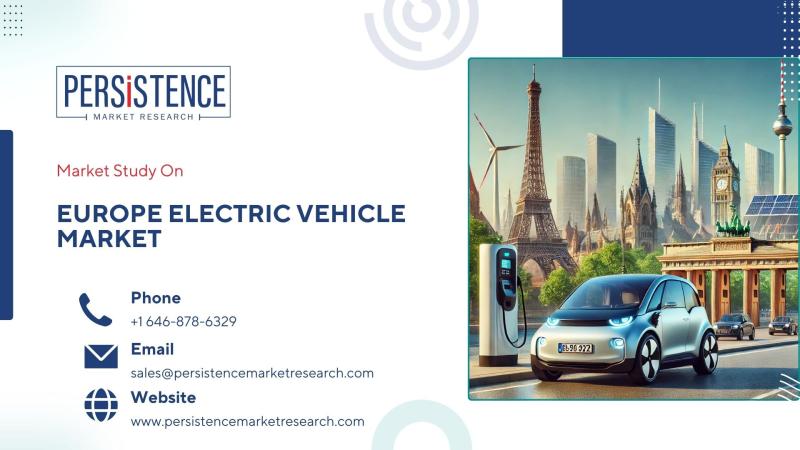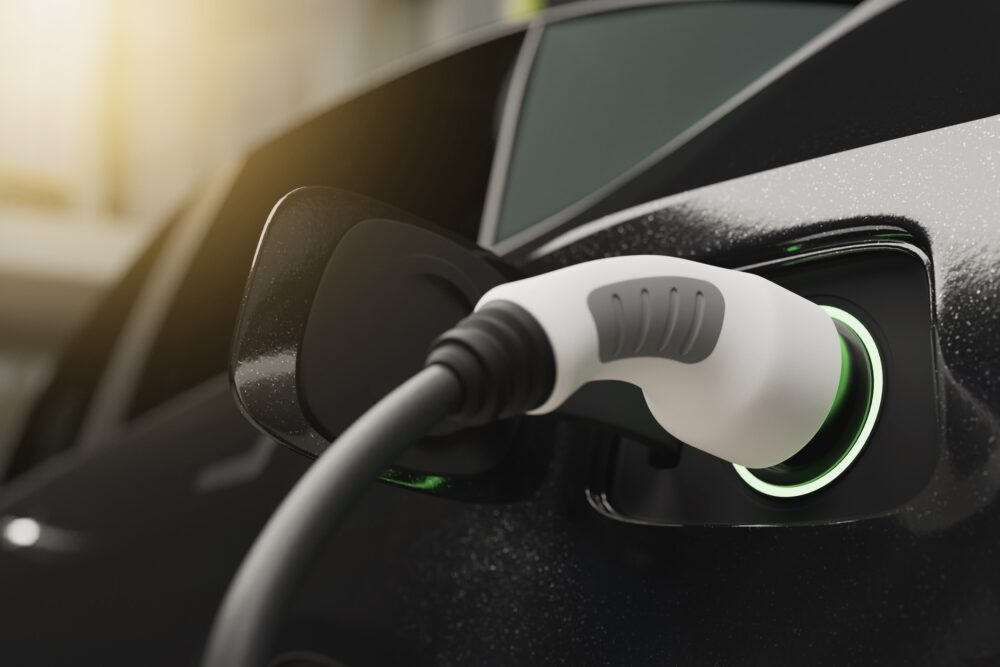The European electric vehicle (EV) market is poised for significant growth over the next decade. According to Persistence Market Research, the market is projected to expand from US$ 174.2 billion in 2024 to US$ 489.3 billion by 2031, achieving a compound annual growth rate (CAGR) of 15.9% during the forecast period. This robust growth is driven by a combination of stringent environmental regulations, technological advancements, and increasing consumer demand for sustainable transportation options.
Get a Sample PDF Brochure of the Report (Use Corporate Email ID for a Quick Response): www.persistencemarketresearch.com/samples/34859
Market Drivers
Environmental Regulations and Policies
The European Union (EU) has implemented rigorous emission standards to combat climate change and reduce greenhouse gas emissions. Regulation (EU) 2019/631, adopted in April 2019, sets ambitious CO2 emission reduction targets for new passenger cars and light commercial vehicles, aiming for a 15% reduction by 2025 and a 37.5% reduction by 2030, relative to 2021 levels. These stringent regulations have compelled automakers to accelerate the development and adoption of electric vehicles to comply with the mandated emission targets.
Technological Advancements
Continuous advancements in battery technology have led to increased energy density, reduced charging times, and lower costs. The European Battery Alliance (EBA), established in 2017, aims to create a competitive and sustainable battery cell manufacturing value chain within Europe. By focusing on innovation and development, the EBA seeks to ensure that Europe benefits from the technological evolution in the EV market, thereby reducing dependence on external suppliers.
Consumer Demand and Awareness
European consumers are increasingly prioritizing environmental sustainability, leading to a surge in demand for electric vehicles. Government incentives, such as subsidies and tax benefits, have further stimulated this demand. For instance, Norway achieved a significant milestone in 2019, with electric vehicles accounting for 42.4% of all new passenger car registrations, leading to a substantial reduction in average fleet emissions.
Infrastructure Development
The expansion of charging infrastructure across Europe has alleviated range anxiety among potential EV buyers. Both public and private sectors have invested heavily in developing widespread and accessible charging networks, facilitating the transition to electric mobility.
Market Segmentation
By Vehicle Type
Passenger Vehicles: This segment dominates the European EV market, driven by high consumer demand for personal transportation solutions that are both sustainable and cost-effective.
Light Commercial Vehicles (LCVs): The adoption of electric LCVs is on the rise, particularly among businesses aiming to reduce operational costs and comply with emission regulations in urban areas.
Heavy Commercial Vehicles (HCVs): Although currently a smaller segment, the electrification of HCVs is gaining momentum, with advancements in battery technology enabling longer ranges and higher payload capacities.
By Propulsion Type
Battery Electric Vehicles (BEVs): BEVs are fully electric vehicles powered solely by batteries. They are gaining popularity due to zero tailpipe emissions and lower operating costs.
Hybrid Electric Vehicles (HEVs): HEVs combine internal combustion engines with electric propulsion, offering improved fuel efficiency.
Plug-in Hybrid Electric Vehicles (PHEVs): PHEVs offer the flexibility of both electric and conventional driving modes, appealing to consumers seeking versatility.
Fuel Cell Electric Vehicles (FCEVs): FCEVs utilize hydrogen fuel cells to generate electricity, emitting only water vapor. While still emerging, they hold potential for the future, especially in the heavy-duty segment.
By Range
Up to 150 Km: Suitable for urban commuting, vehicles in this range cater to daily short-distance travel needs.
151 to 300 Km: These vehicles offer a balance between affordability and range, appealing to a broader audience.
301 to 500 Km: Targeting consumers requiring longer ranges, this segment is gaining traction with advancements in battery technology.
Above 500 Km: High-range EVs cater to long-distance travelers and are becoming more prevalent as charging infrastructure expands.
Competitive Landscape
The European EV market is characterized by intense competition among established automakers and new entrants. Companies are investing heavily in research and development to introduce innovative models and gain market share.
Volkswagen Group: Volkswagen has committed to making 50% of its vehicle sales electric by 2030 and 100% by 2040, reflecting its dedication to sustainable mobility.
BYD Auto: Chinese manufacturer BYD has expanded into the European market, offering models like the Tang and Atto 3. The company plans to build its first European passenger car factory in Hungary, aiming for an annual capacity of over 100,000 vehicles.
Ford: Ford is investing €4.4 billion into its German subsidiary to stabilize European operations and facilitate the transition to electric vehicles. This investment accompanies job cuts and reduced production of some EV models, highlighting the challenges traditional automakers face in the EV transition.
Toyota: Historically a leader in hybrid technology, Toyota plans to unveil its next generation of fully electric cars in 2025, aiming to catch up with competitors. The new models are expected to offer improved performance and longer ranges, addressing previous shortcomings.
Challenges and Opportunities
Challenges
Supply Chain Constraints: The rapid growth in EV demand has strained the supply of critical raw materials like lithium and cobalt, essential for battery production.
High Initial Costs: Despite long-term savings, the upfront cost of EVs remains a barrier for some consumers.
Charging Infrastructure Gaps: While expanding, charging networks need further improvements in coverage and speed.
Opportunities
Battery Innovations: Solid-state batteries and alternative chemistries promise greater efficiency and range.
Government Incentives: Policies encouraging EV adoption through tax breaks and subsidies will continue to fuel market growth.
New Business Models: Subscription-based EV services and battery leasing could make electric mobility more accessible.
Conclusion
The European electric vehicle market is on a transformative trajectory, driven by regulatory mandates, consumer demand, and technological breakthroughs. As the industry navigates challenges such as supply chain constraints and infrastructure gaps, opportunities for innovation and market expansion remain abundant. Automakers, policymakers, and investors must collaborate to ensure sustainable growth and widespread EV adoption across Europe.
Explore the Latest Trending “Exclusive Article” @
• https://insightinnovators.wordpress.com/2025/03/06/exploring-the-potential-of-cyclohexane-in-green-chemistry-innovations/
• https://hackmd.io/@ifI0088USW246Rx9PbLRMQ/rkDFzZDj1g
• https://statisticalinsight.blogspot.com/2025/03/the-future-of-cyclohexane-derivatives.html
• https://www.quora.com/profile/Aishwarya-Nagur-1/How-Digitalization-and-Smart-Manufacturing-Are-Reshaping-Cyclohexane-Production-The-chemical-industry-stands-at-the-cus
• https://medium.com/@aishwaryanagur6/the-impact-of-trade-policies-on-global-cyclohexane-supply-and-demand-6f28312d39f6
• https://vocal.media/stories/how-covid-19-affected-the-cyclohexane-market-and-recovery-trends
• https://www.myvipon.com/post/1543075/How-Recycling-Circular-Economy-Trends-Are-amazon-coupons
Contact Us:
Persistence Market Research
G04 Golden Mile House, Clayponds Lane
Brentford, London, TW8 0GU UK
USA Phone: +1 646-878-6329
UK Phone: +44 203-837-5656
Email: sales@persistencemarketresearch.com
Web: https://www.persistencemarketresearch.com
About Persistence Market Research:
At Persistence Market Research, we specialize in creating research studies that serve as strategic tools for driving business growth. Established as a proprietary firm in 2012, we have evolved into a registered company in England and Wales in 2023 under the name Persistence Research & Consultancy Services Ltd. With a solid foundation, we have completed over 3600 custom and syndicate market research projects, and delivered more than 2700 projects for other leading market research companies’ clients.
Our approach combines traditional market research methods with modern tools to offer comprehensive research solutions. With a decade of experience, we pride ourselves on deriving actionable insights from data to help businesses stay ahead of the competition. Our client base spans multinational corporations, leading consulting firms, investment funds, and government departments. A significant portion of our sales comes from repeat clients, a testament to the value and trust we’ve built over the years.
This release was published on openPR.


